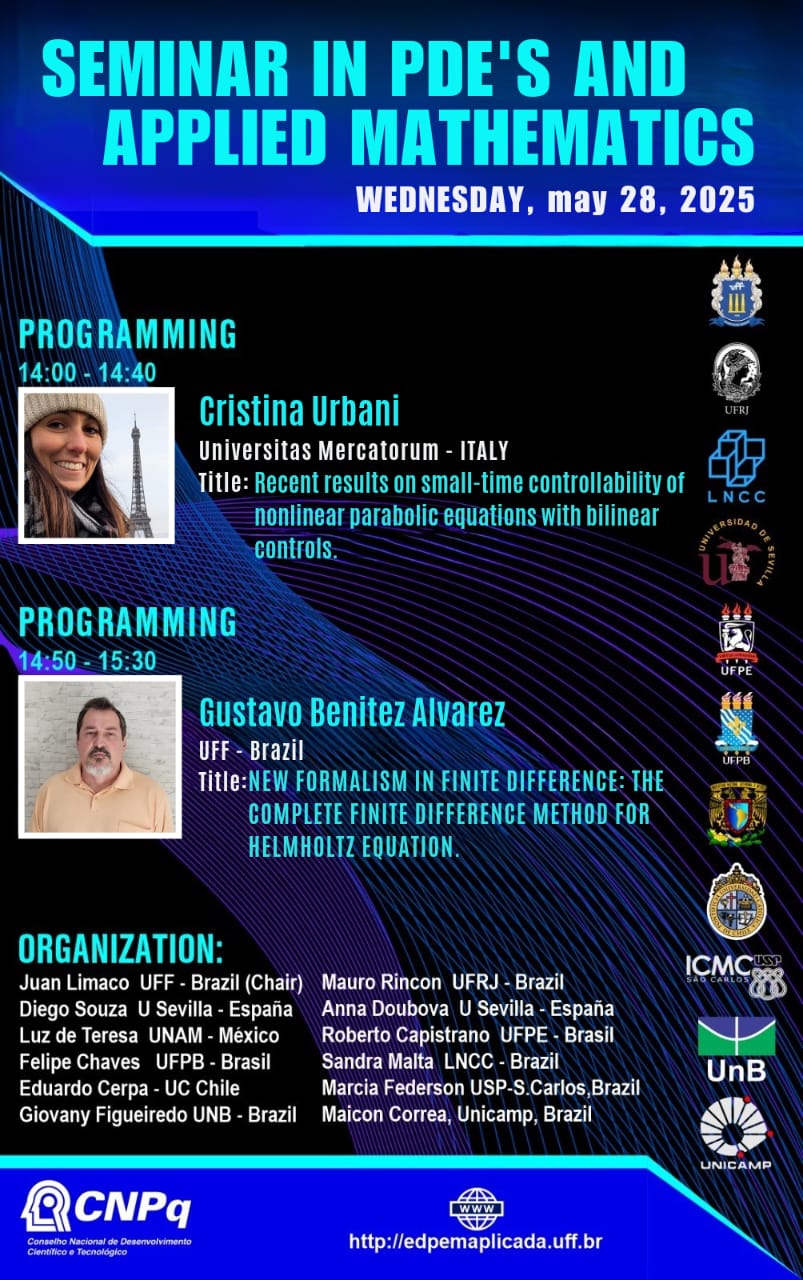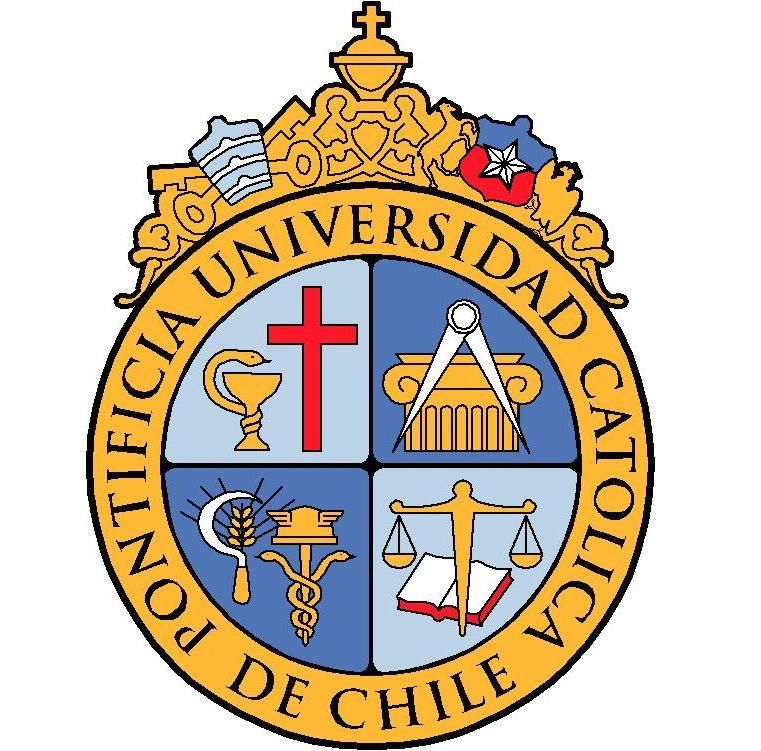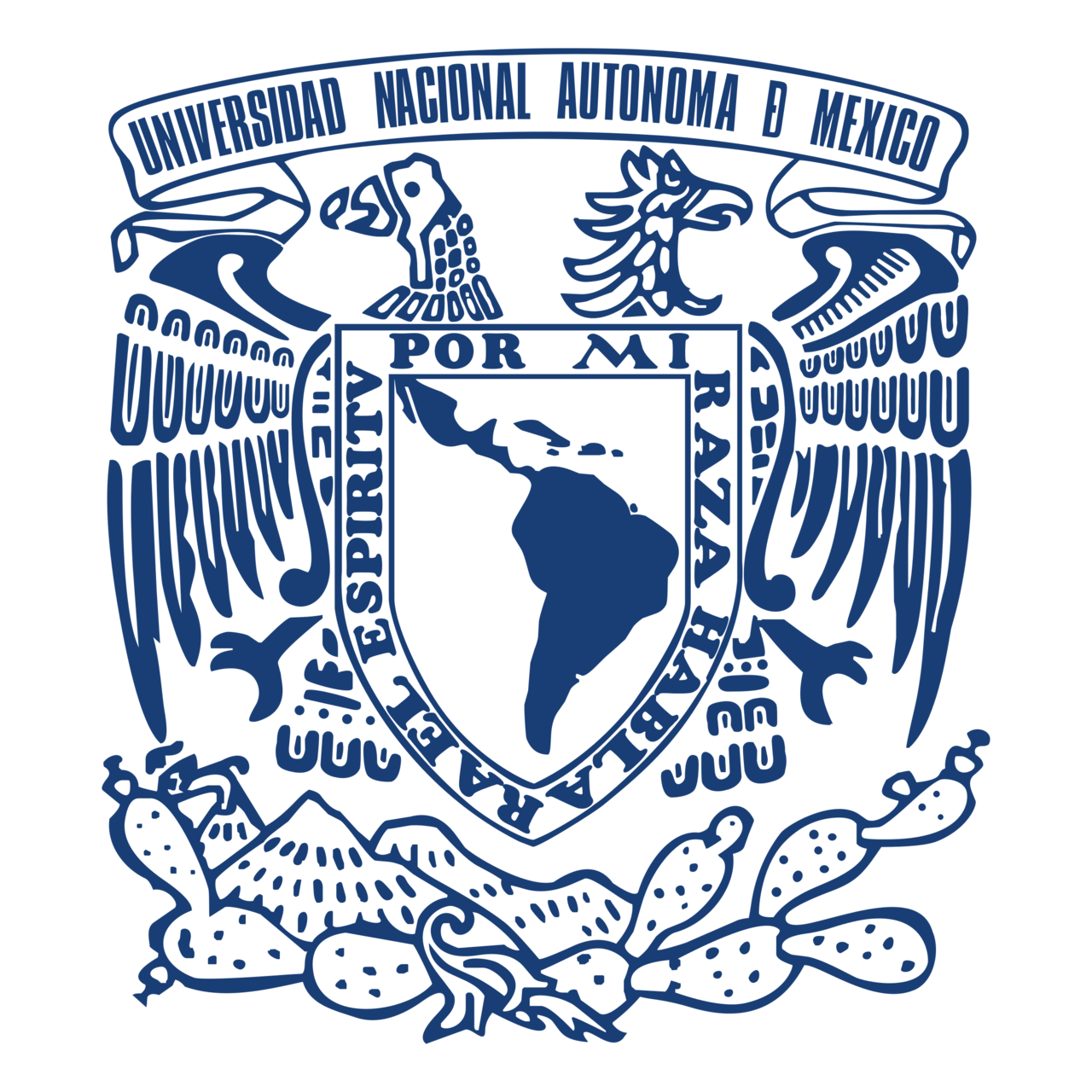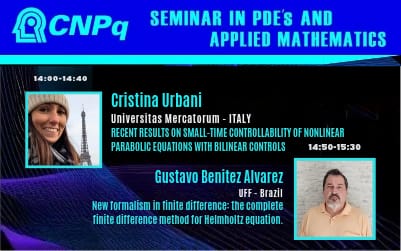Seminar in EDP and Applied Mathematics
May 28 , 2025 – 14h (Brazil)
Streaming: Youtube Channel | SEMINARIO DE EDP E MATEMATICA APLICADA
Event

About Seminars
Our Online Seminar is one of the most important events in Brazil, it has been held since August 2020, every Wednesday at 2 pm, Brasília time, with a frequency of 14 days. Two 40-minute lectures are presented in each session. Our speakers are world-renowned mathematicians from Europe, the United States and South America.
Featured Talks & Speakers

Cristina Urbani
Universitas Mercatorum-Italy
14:00h – 14:40h
Recent results on small-time controllability of nonlinear parabolic equations with bilinear controls.
This is a joint work with A. Duca and E. Pozzoli.

Gustavo Benitez Alvarez
Universidade Federal Fluminense.
14:50h – 15:30h
New formalism in finite difference:the complete difference method for Helmholtz equation
.
A new formalism in the finite difference framework is developed, which consists of three
steps: choosing the dimension of the local approximation subspace, constructing a vector
basis for this subspace, and determining the coefficients of the linear combination [1, 3]. This new approach called the Complete Method is capable to generate any finite difference scheme that belongs to this subspace, and can be applied to any PDE. The Helmholtz equation is the PDE that describes the time-harmonic of the wave equation. It is well known that finite difference and finite element methods exhibit the ‘error pollution effect’ for medium and high wavenumber. When applied to the Helmholtz equation on uniform meshes, the Complete Finite Difference Method is both consistent and capable of minimizing the dispersion relation for all stencils in all dimensions [1, 3]. In this case, the vectors used to form the basis of the complete method are the classical centered scheme and new schemes developed by modifying only the k 2 u term of the PDE [1, 2, 3, 4]. The coefficients of the linear combination are chosen in such a way as to minimize the dispersion relation. In the 1D case and 3-point stencil, pollution error is eliminated. In the 2D case and 5-point stencil, the Complete Centered Finite Difference Method presents a dispersion relation equivalent to Galerkin/Least-Squares Finite Element Method. In the 2D case and 9-point stencil, two versions were developed using two different bases for the local approximation subspace. Both versions are equivalent and exhibit a dispersion relation similar to Quasi Stabilized Finite
Element Method. Numerical results confirm the good performance of the new formalism.
References
[1] ALVAREZ GB, NUNES HF & MENEZES WA. 2024. Complete centered finite difference
method for Helmholtz equation. An Acad Bras Cienc 96: e20240522. DOI 10.1590/0001-
3765202420240522.
[2] ALVAREZ GB & NUNES HF. 2024. Novos Esquemas de Diferenças Finitas para a
Equação de Helmholtz. REMAT: Revista Eletrônica da Matemática 10: e4001. DOI
10.35819/remat2024v10iespecialid7019
[3] NUNES HF. 2024. Método Completo de Diferenças Finitas Centradas para a Equação de
Helmholtz. Volta Redonda: Master’s Thesis, Universidade Federal Fluminense, 133 p.
[4] ALVAREZ GB & NUNES HF. 2023. Novos esquemas de diferenças finitas para a equação
de Helmholtz. Encontro Regional de Matemática Aplicada e Computacional (ERMAC-RJ) &
Simpósio Primeira Década PPG-MCCT, 2023.
About Organization
Juan Limaco -UFF-Coordenador
Mauro Rincon – UFRJ – Brazil
Anna Doubova-U.Sevilla-Spain
Luz de Teresa-UNAM Mexico
Diego Souza – U Sevilla -Spain
Felipe Chaves-UFPB-Brazil
Roberto Capistrano – UFPE Brazil
Sandra Malta – LNCC – Brazil
Eduardo Cerpa – U.C – Chile
Giovani Figueiredo – UNB – Brazil
Marcia Federson USP,San Carlos –Brazil;
Maicon Correa – UNICAMP- Brazil
Our Partners











Access our channel!
A channel for students, professors, researchers and professionals who wish to deepen their knowledge in EDP and applied mathematics.

